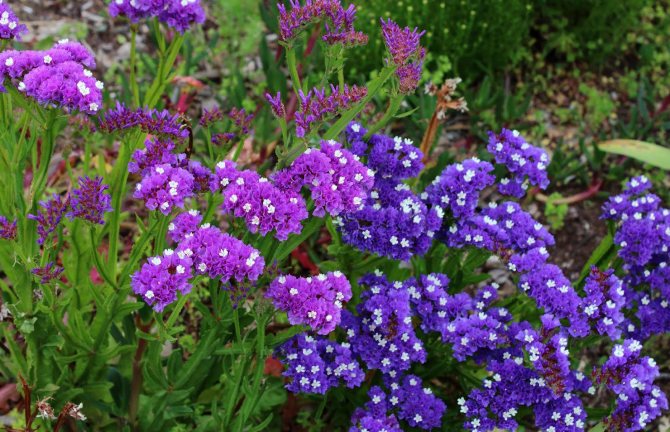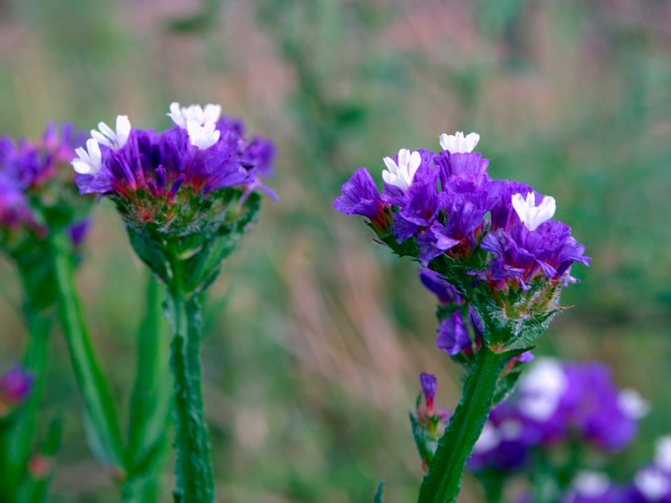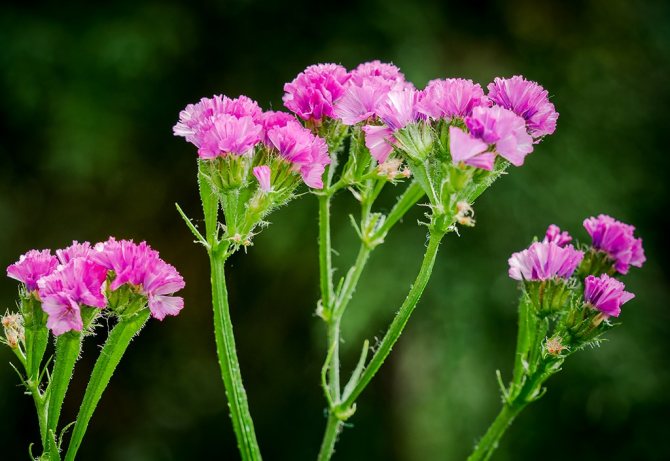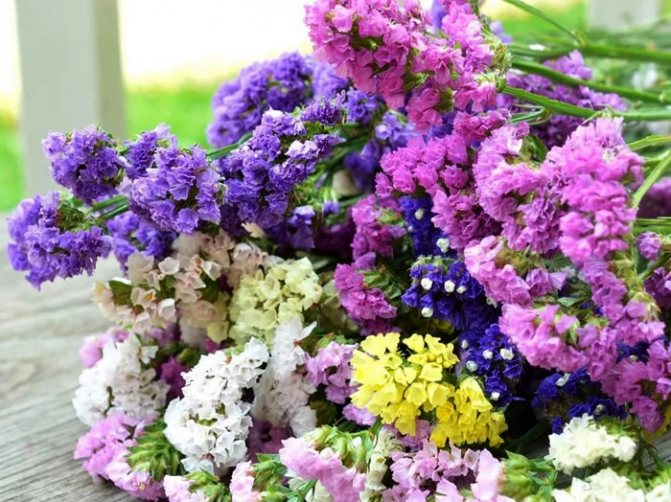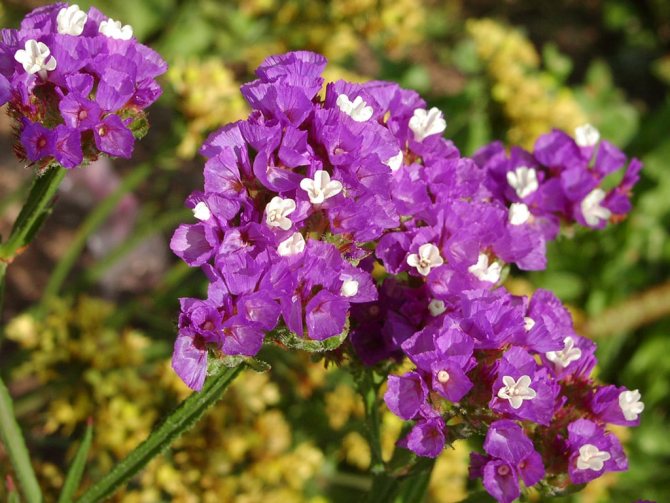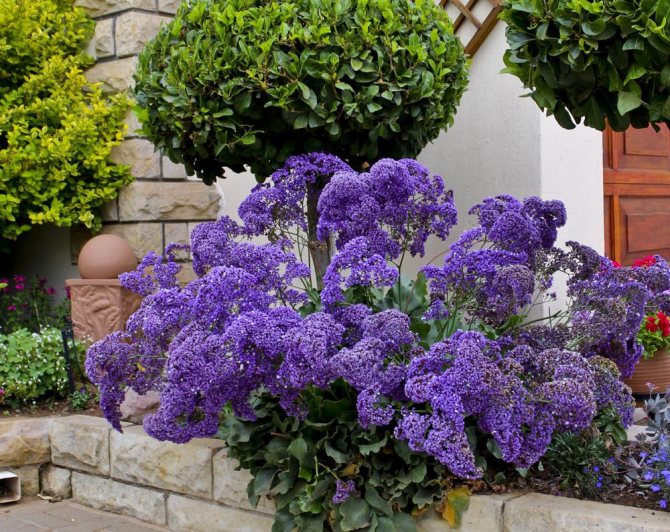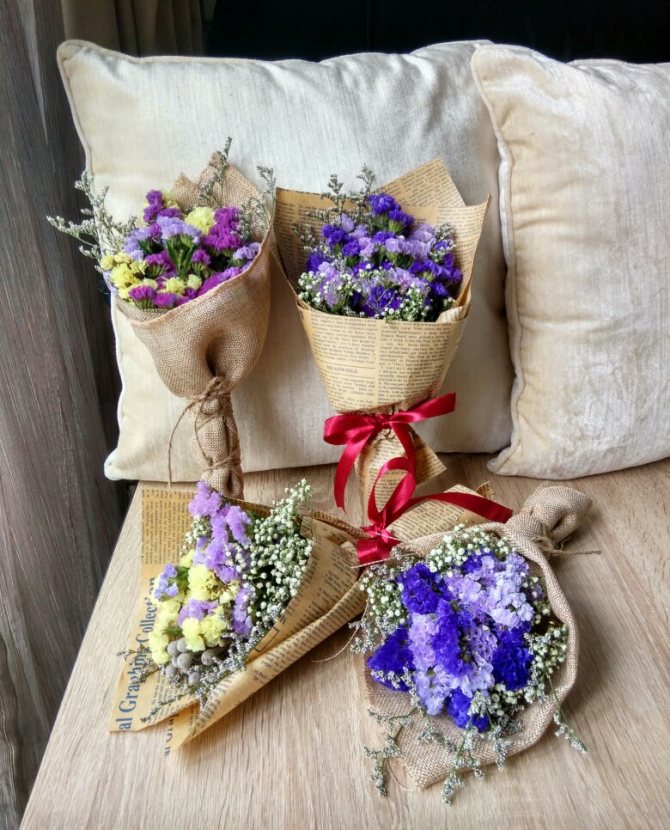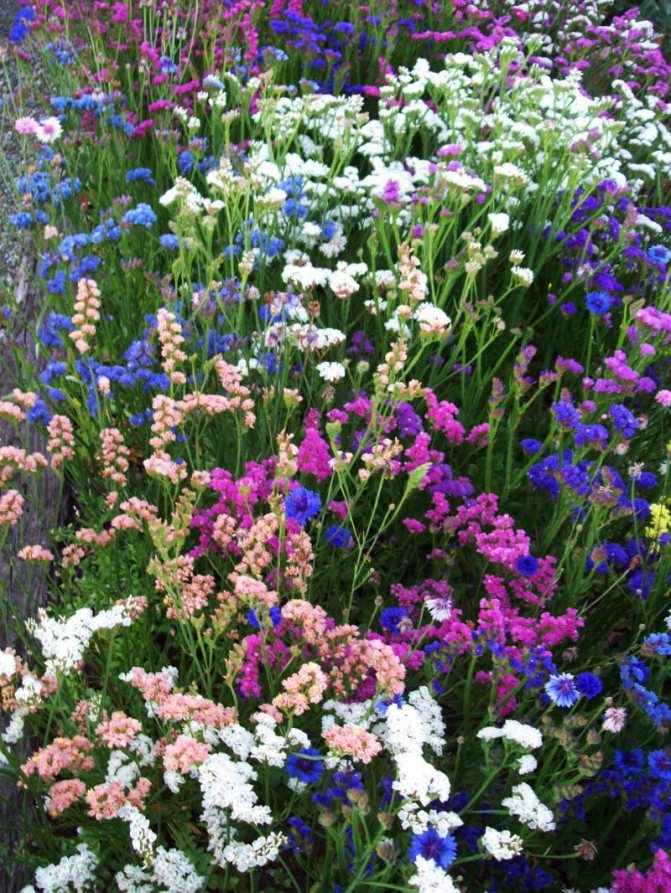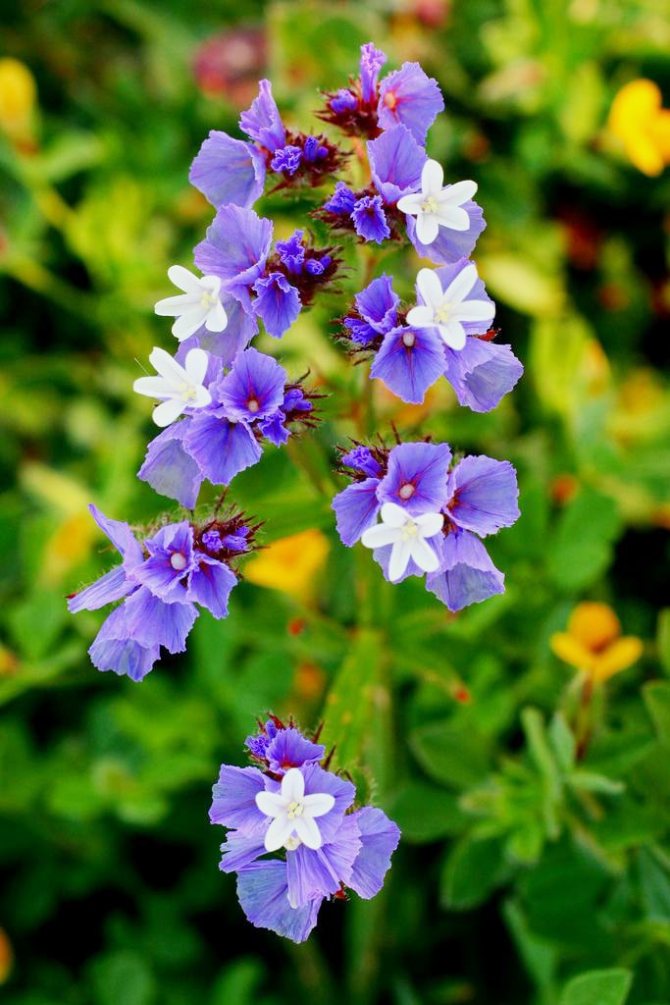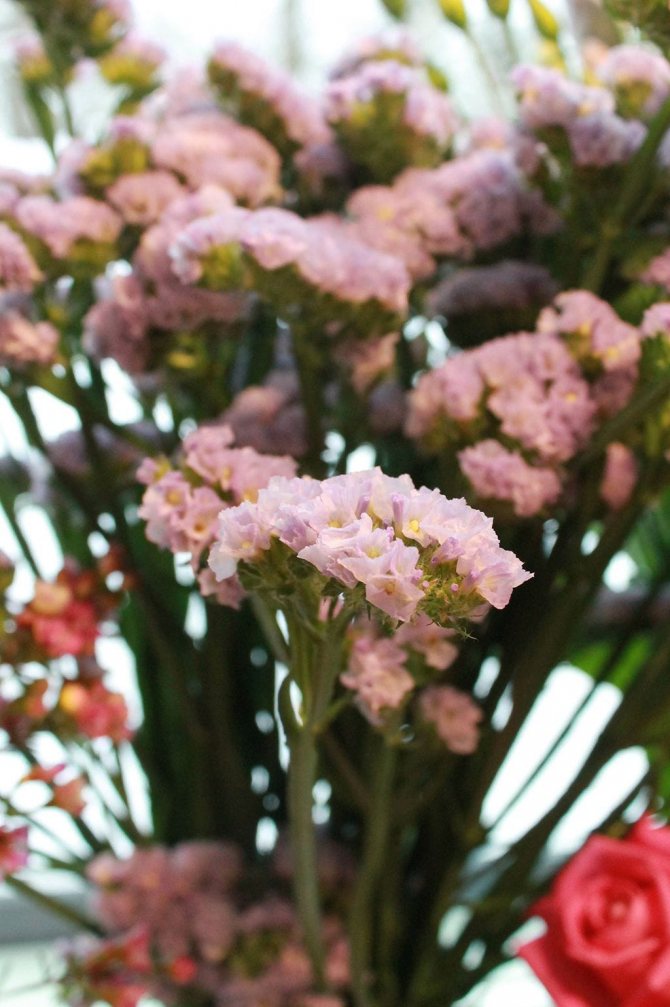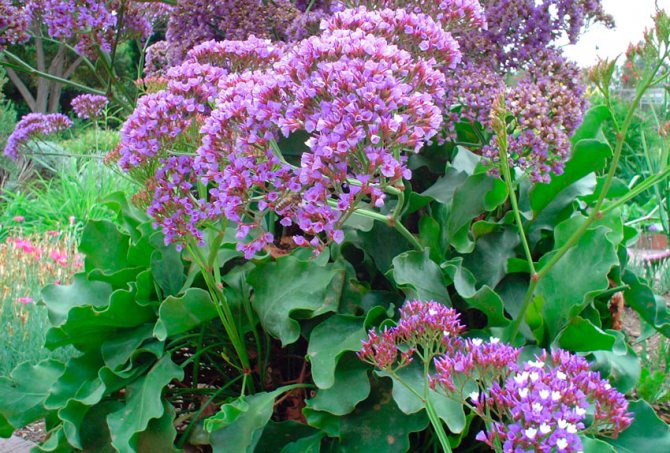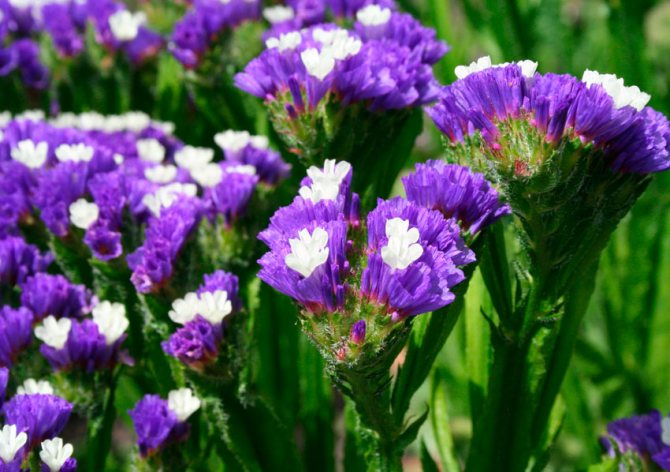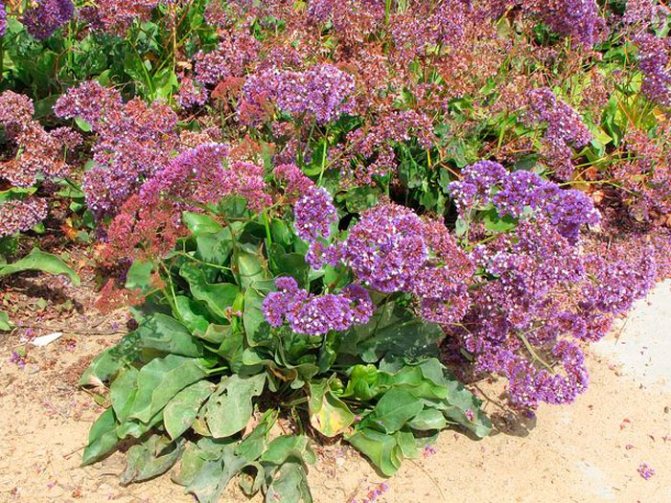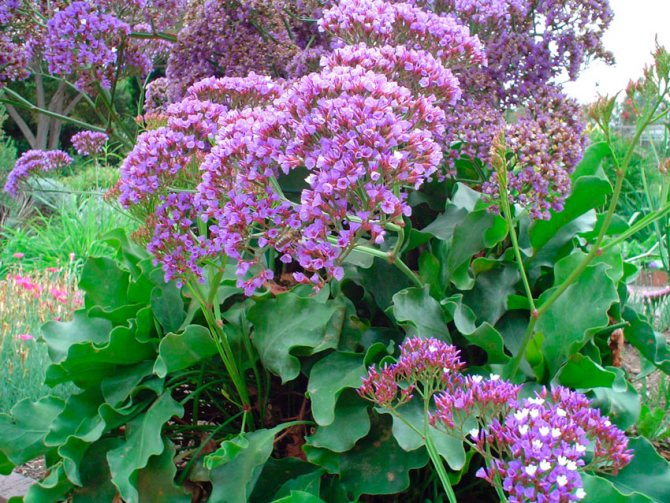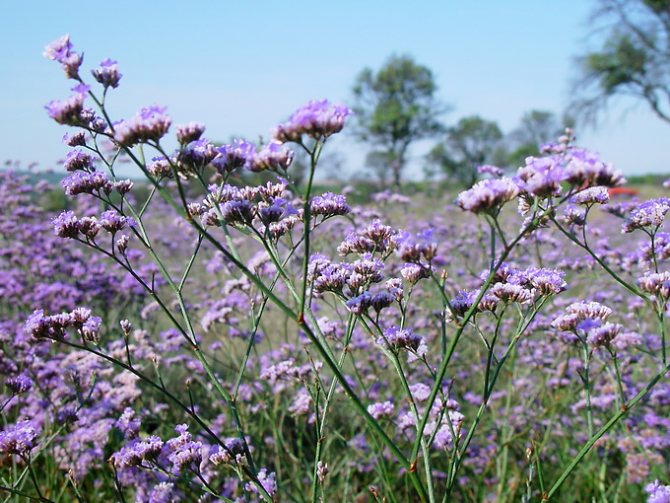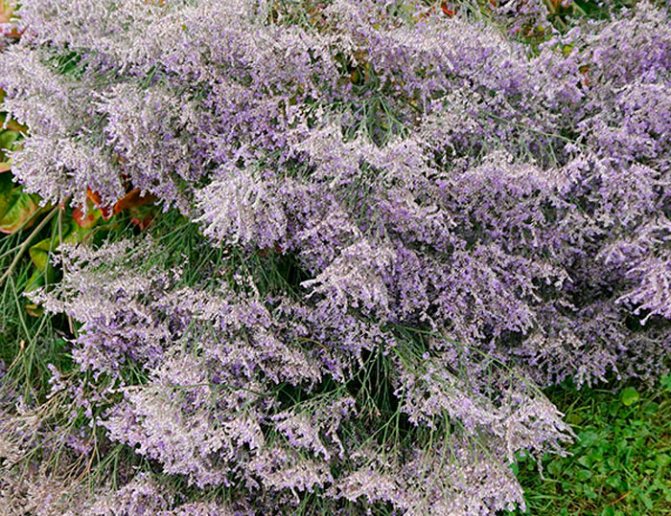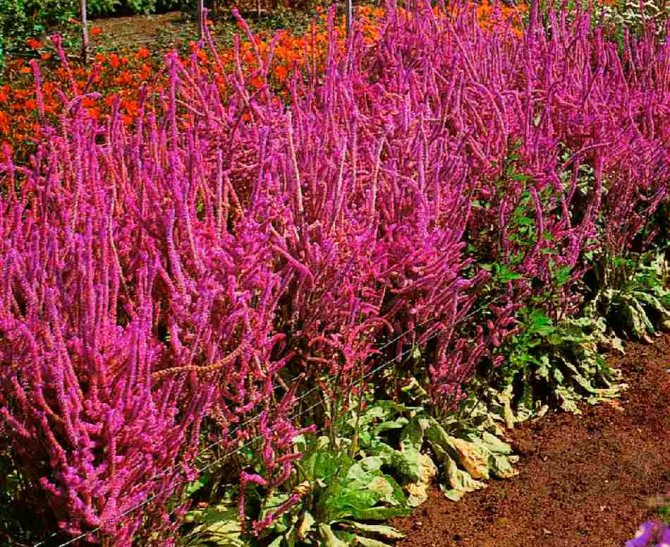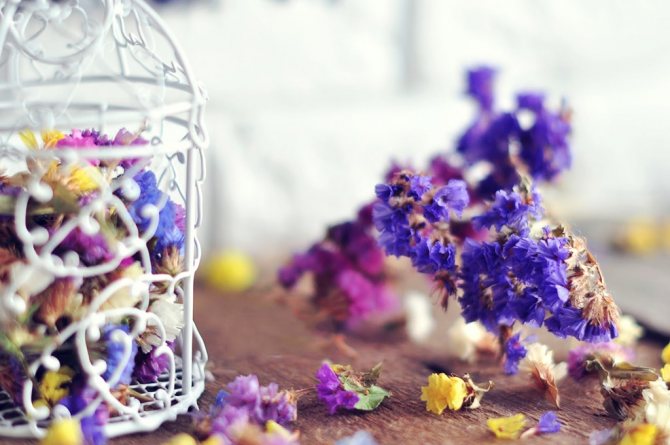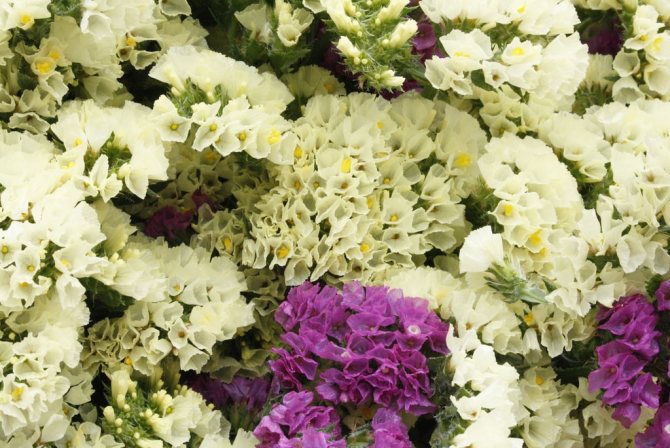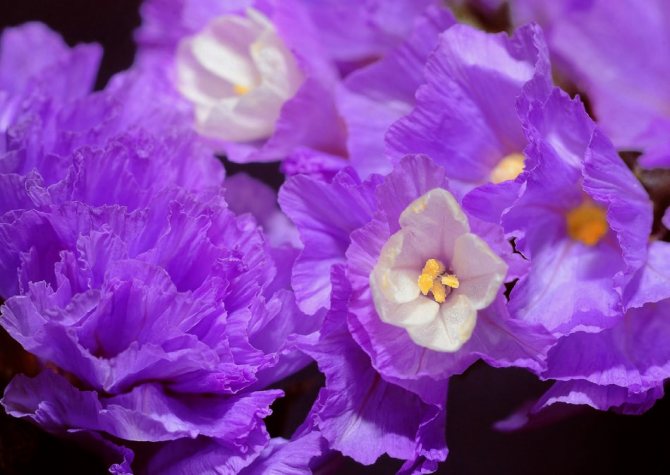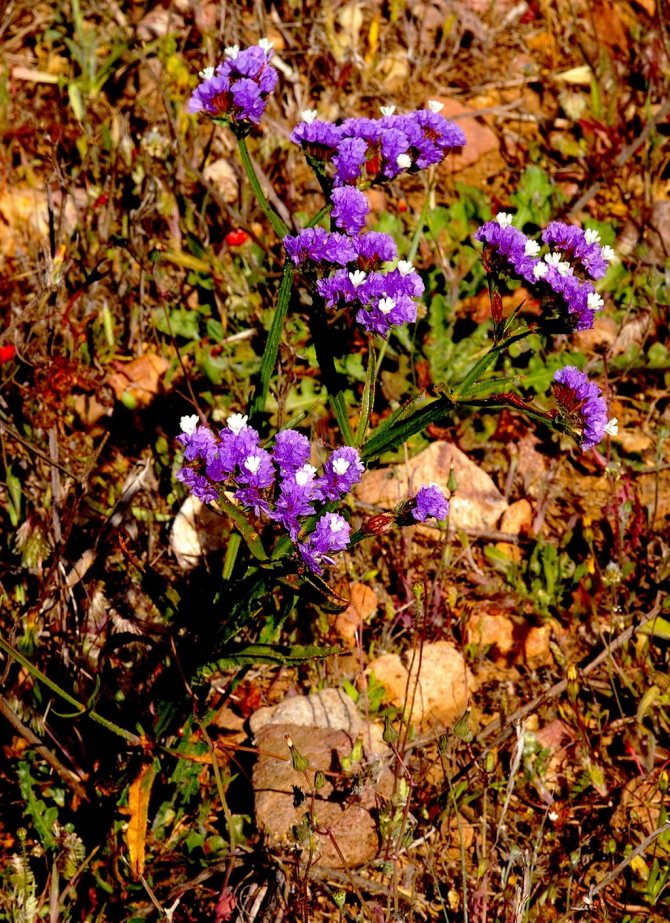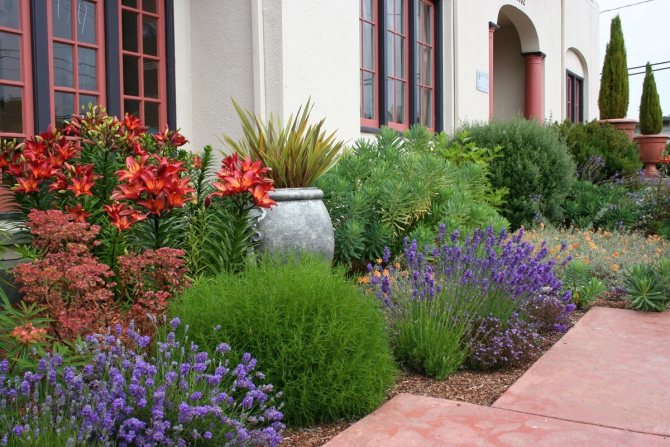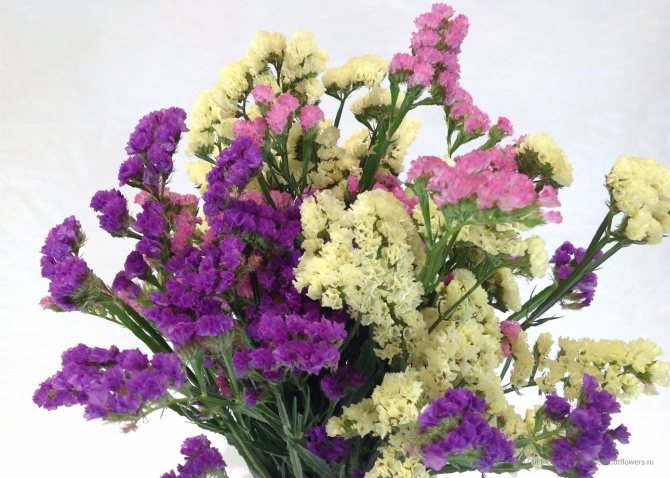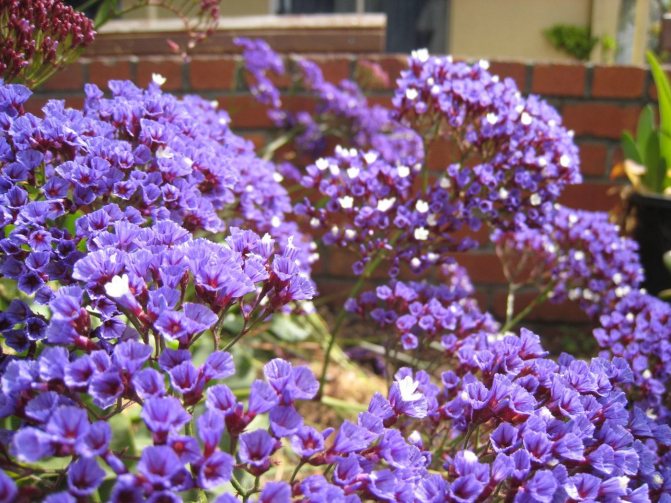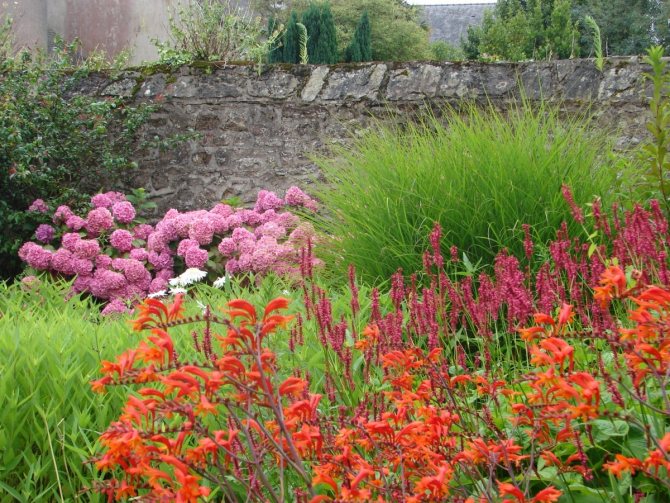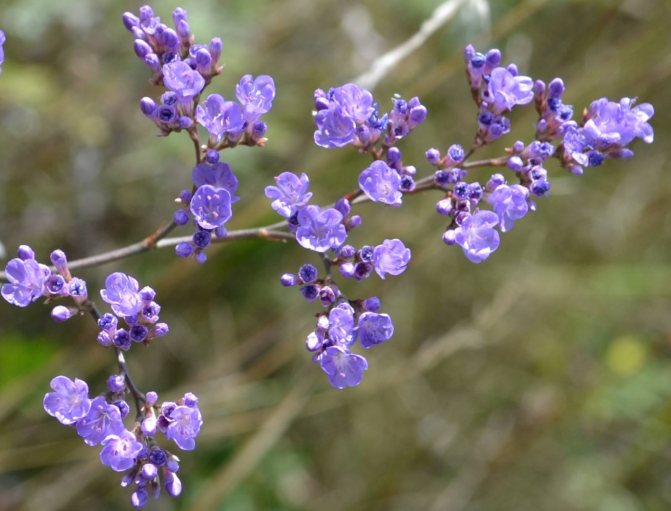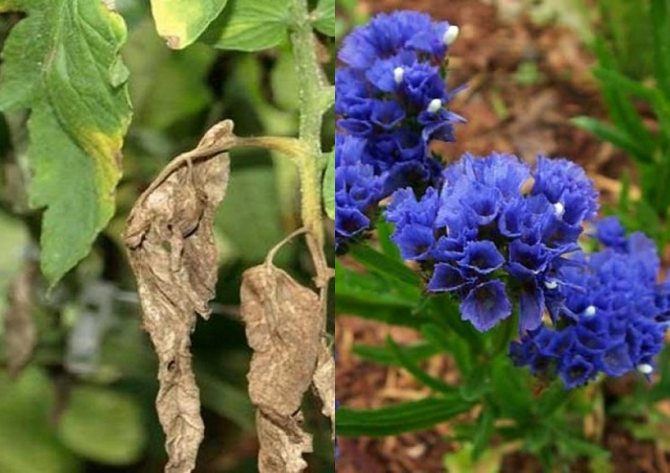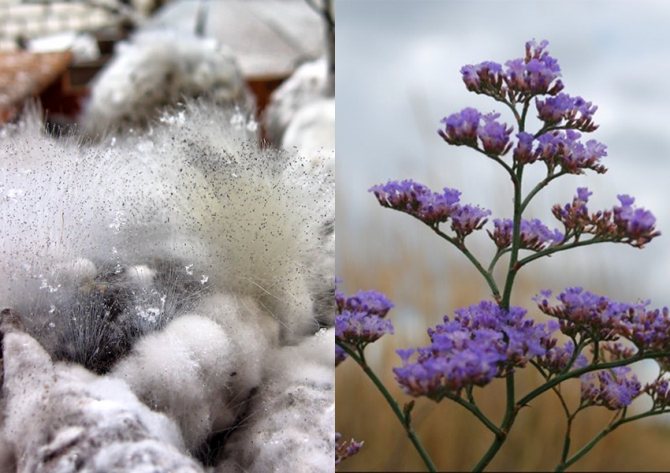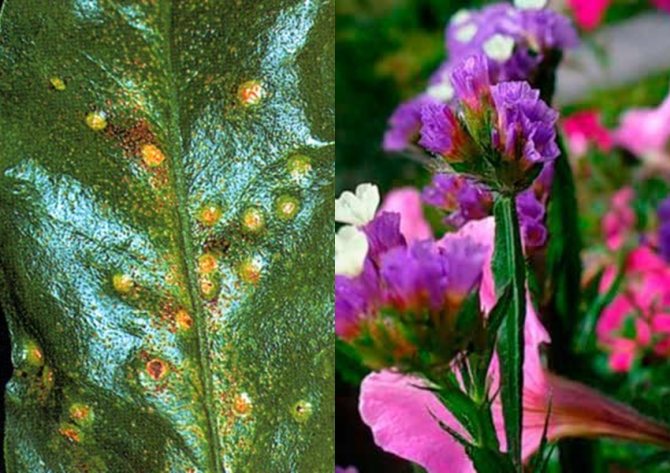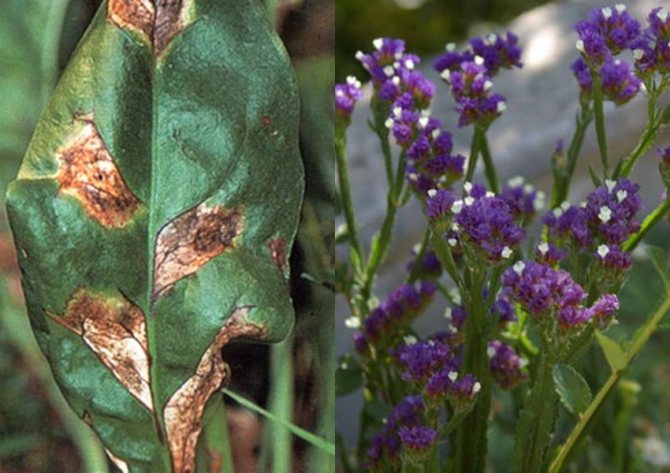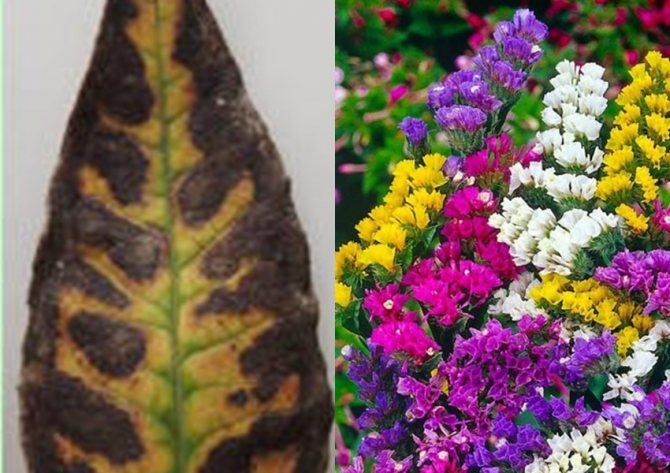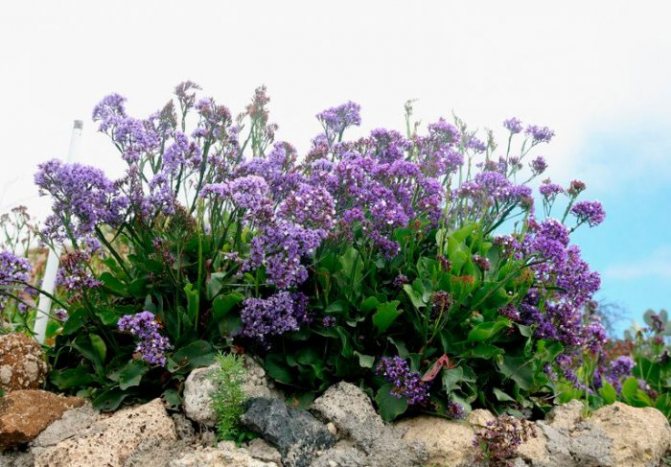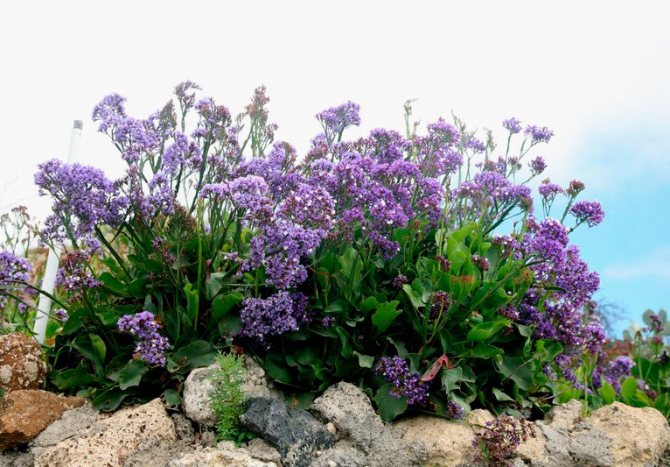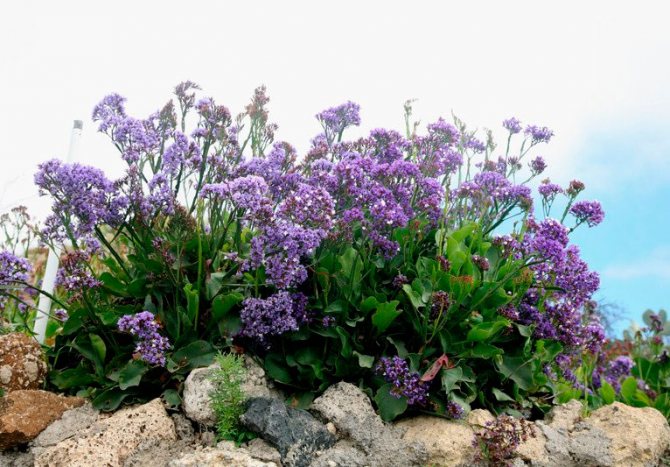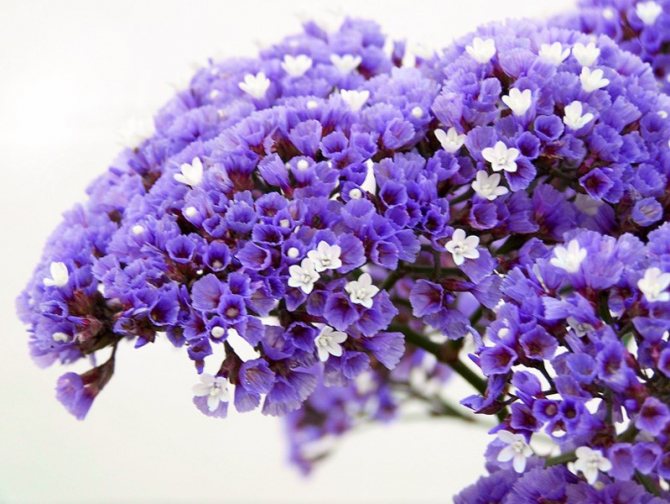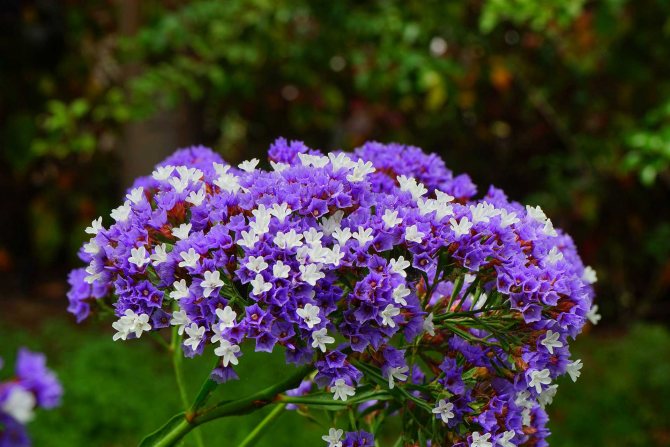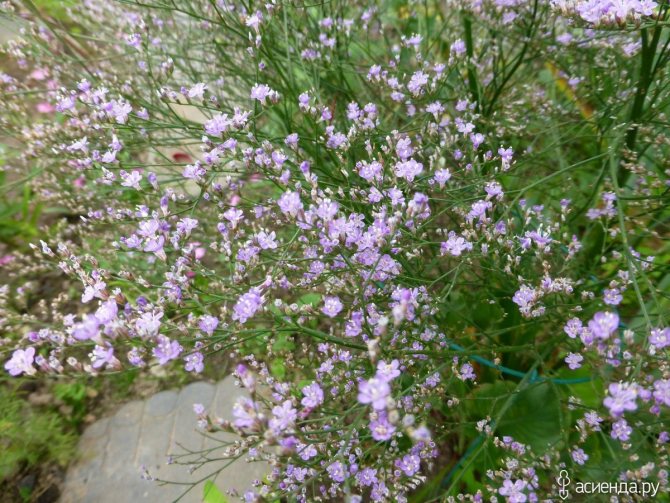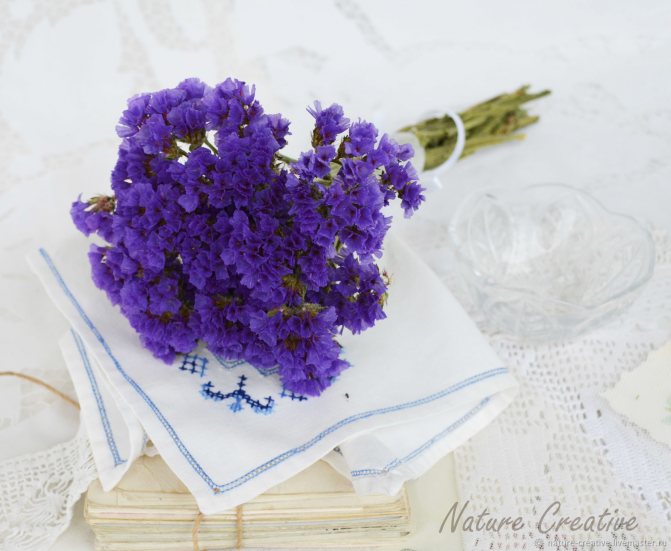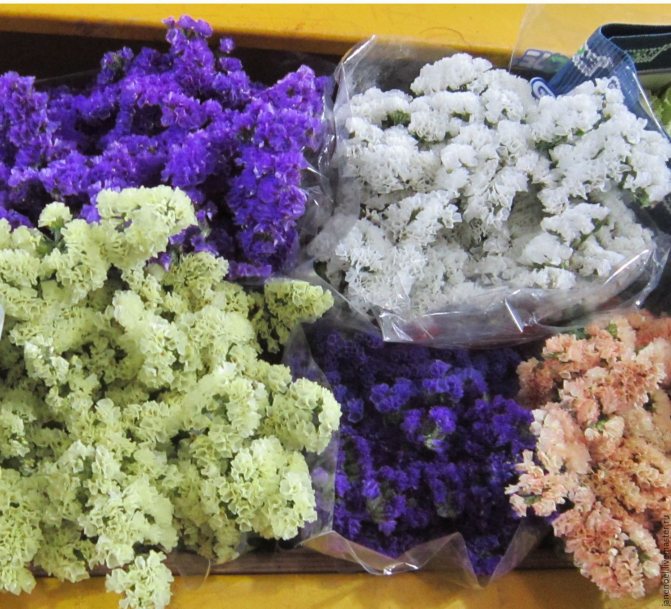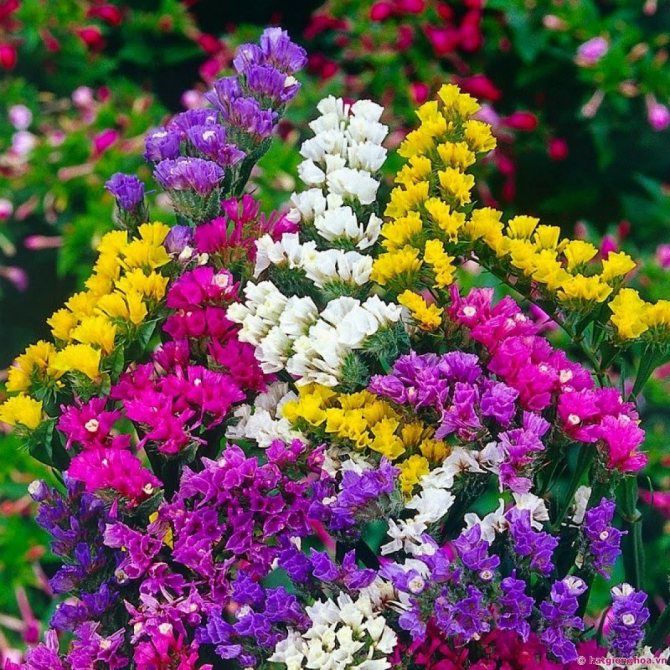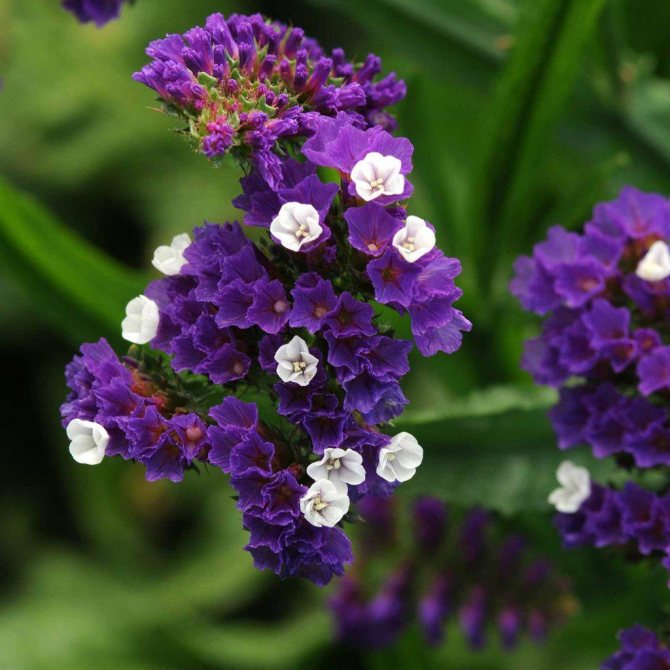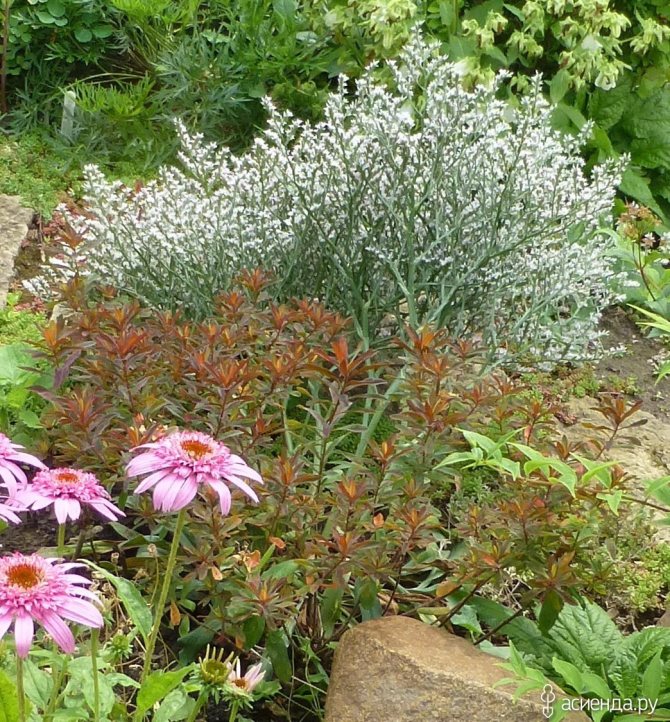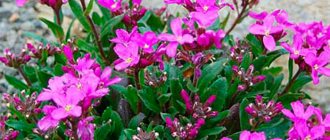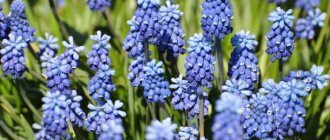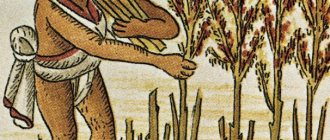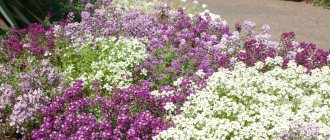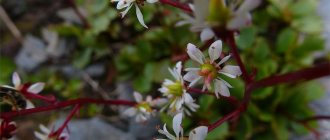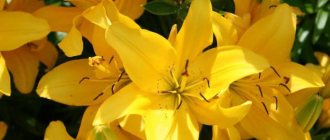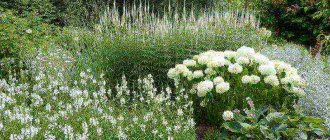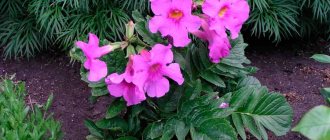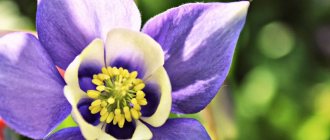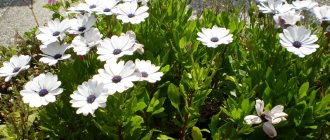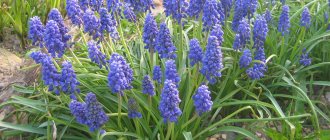Statice is one of those plants that are often used in landscaping. It is also noteworthy that its flowers, even after cutting, can decorate your home for a long time. Statitsa is also known under other names: kermek, immortelle, sea lavender and Tatar lemongrass.
Photos and names of species, varieties of statice
Kermek is grown both as an annual and as a perennial. It is a semi-shrub that grows up to 150 cm in height.
Leaves of limonium are elongated, straight, collected in a socket. Most often they are basal, and at the top the stem is practically without leaves.
During flowering, beautiful inflorescences of white, yellow, blue, purple, pink are formed.
Depending on the type and variety of the plant, the flowers are monochromatic or multi-colored. The peak flowering of limonium is in the middle of summer.
Statice is a unique plant that allows every gardener to choose the variety he likes best.
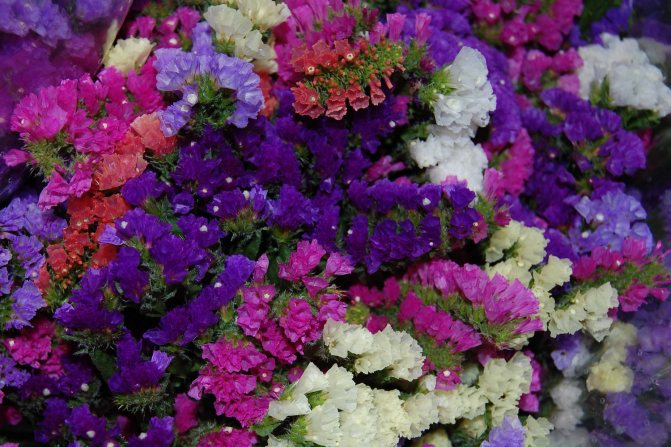
Did you know?! This beautiful flower is not only distinguished by its abundant and bright flowering, decorates areas, it also has medicinal properties. Since ancient times, dyes were obtained from it, which were later used in painting carpets and leather. Kermek root contains so-called tannin. The latter is used in the leather tanning process. Traditional medicine is also very familiar with this flower. It is used as a healing and hemostatic agent.
Gmelin Statice (Limonium Gmelinii)
This species has a height of about 50 cm. It is grown as a perennial plant. Gmelin is considered one of the most cold-resistant types of limonium.
During flowering, large inflorescences of a bluish-purple color are formed.
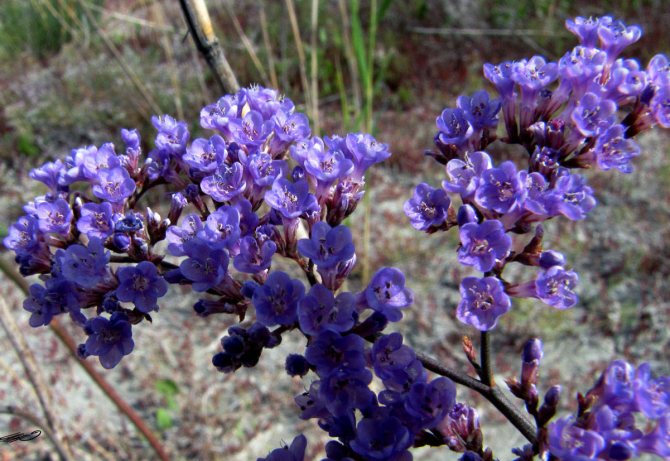

Kermek broadleaf (Limonium latifolium)
Kermek broad-leaved has purple inflorescences, its leaves are wide, green.
Very beautiful view, looks spectacular in group plantings.
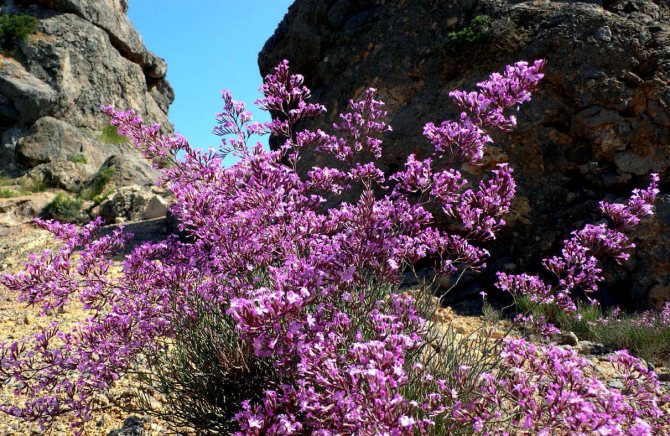

Kermek perez (Limonium perezii)
The birthplace of the Perez species is the Canary Islands. It is very rare in our country and is considered an exotic plant.
You can find out the type by large inflorescences, oval leaves. Inflorescences are formed in all shades of blue and lilac.
The flower loves heat very much, therefore it is suitable for growing in regions with hot and long summers.
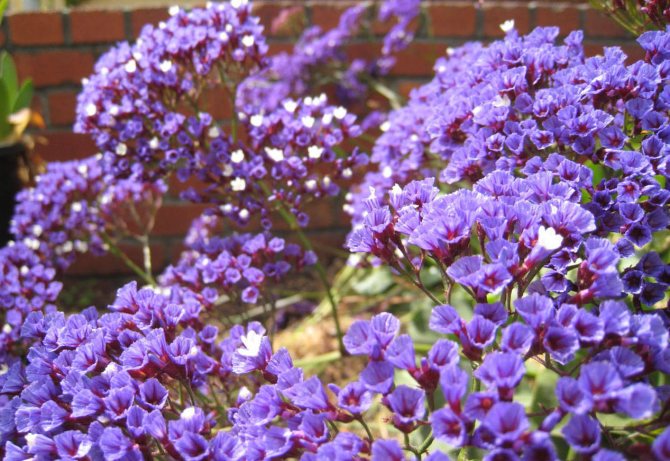

Kermek bonduelli (Limonium bonduellii)
Bondwell grows up to 150 cm tall. This species is grown as a perennial.
It blooms in white or yellow. An elegant plant suitable for both single and group planting.
Chinese Kermek (Limonium sinensis)
Chinese kermek is grown in the middle zone of our country as an annual.
This species appeared not so long ago. Plant height - 70 cm.
A distinctive feature of the Chinese Kermek is the small inflorescences of a white or cream shade.
Kermek notched (Limonium sinuatum)
Medium-sized plant with small inflorescences.
Flowers can grow no more than 1 cm in diameter, their color is white, lilac, blue or pink.
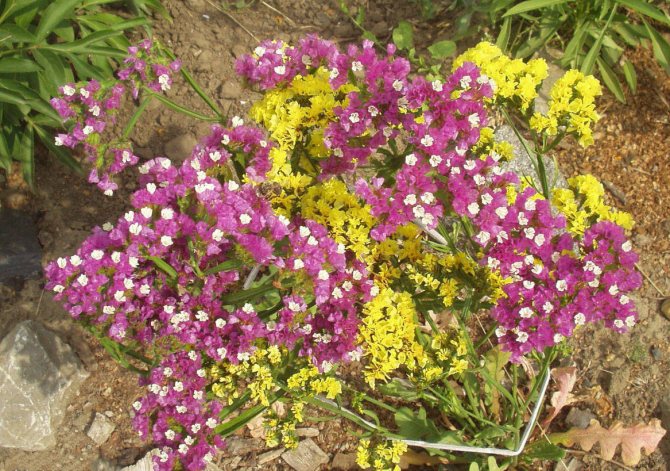

A huge variety of plant varieties allows you to choose one or another type, to decorate any site.
Description of the plant
Statice is a tall herbaceous plant with an erect peduncle. Its leaves are located near the root.The flower can grow up to 80 cm in height. Statice flowers are small and can be white, pink, yellow, blue, blue and other shades. They are collected in a spikelet from which a panicle is formed. Flowering begins in July and continues until the onset of frost.
The plant gained its popularity among landscape designers due to its unpretentious care. Also, the statice is resistant to drought, all kinds of diseases and pests. But what this plant does not tolerate is shadows, excessive soil moisture and frost. Therefore, in some regions it can only be grown as an annual plant.
The cut flowers of the statice are able to maintain their appearance for several weeks. Therefore, it is often used when making bouquets. Surprisingly, it has an original look even in dry compositions.
When is it better to sow for seedlings
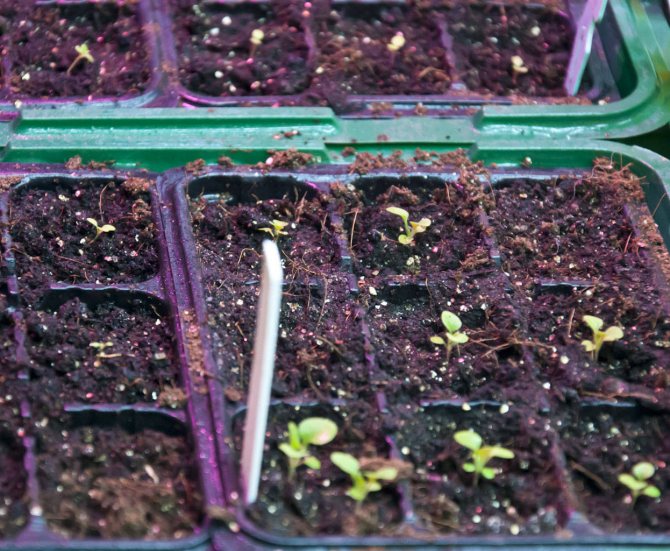

Growing kermek from seeds has some peculiarities, although the plant is considered quite unpretentious.
The most important thing is to accurately determine the timing of sowing.
If you decide to grow limonium in pots, boxes, then it is recommended to sow from mid-February.
When grown in a greenhouse, seeds can be sown no earlier than mid-April.
Its optimum temperature should be about + 17-22 ° С.
The fact is that the plant loves heat very much, so you need to wait until the soil warms up well.
Correctly chosen sowing time affects the abundance, splendor of the flowering of the shrub.
Choosing a soil for planting seedlings
Sowing kermek can be carried out in pre-prepared soil or purchased in a store.
The purchased soil mixture is already ready for sowing, as it contains all the necessary nutrients for the normal development and growth of the flower.
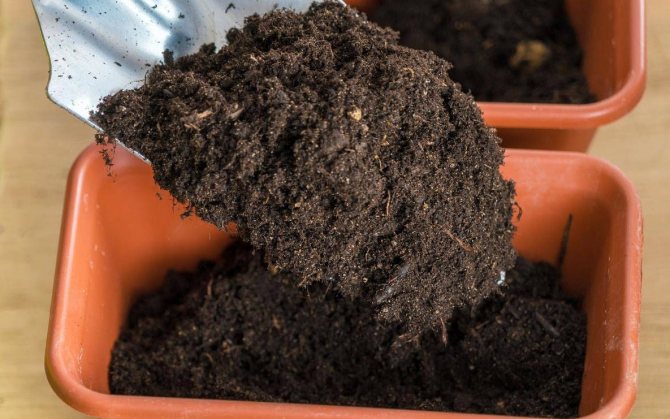

If you decide to make the soil mixture yourself, then you need to adhere to the following instructions:
- First, they collect ordinary garden land on the site.
- Then it is mixed with sand.
- The resulting substrate is sieved through a sieve. This measure is necessary in order to clear the ground from small stones, branches, roots.
- Then the earth is heated in the oven for 2 hours at a temperature of 100 ° C.
- The heated soil is cooled, watered with a weak solution of potassium permanganate to disinfect it.
- After that, pour it over with warm water.
The soil mixture is ready for sowing, now you can start processing the planting material.
Seed preparation before sowing
Another key consideration when growing statice from seed is proper seed preparation.
Planting material for limonium is long, ribbed seeds, covered with a hard shell.
That is why the seeds will germinate for a very long time if you do not take action.
To make the planting material grow faster, you need to rub it a little on sandpaper.
Then the seeds are kept in wet sawdust and a preparation called Epin for 2-3 days.
Getting dried flowers
For further use, you should cut flowers that have retained an attractive appearance and have not burned out in the sun. The harvested material is collected in small bouquets and dried suspended in a darkened room.
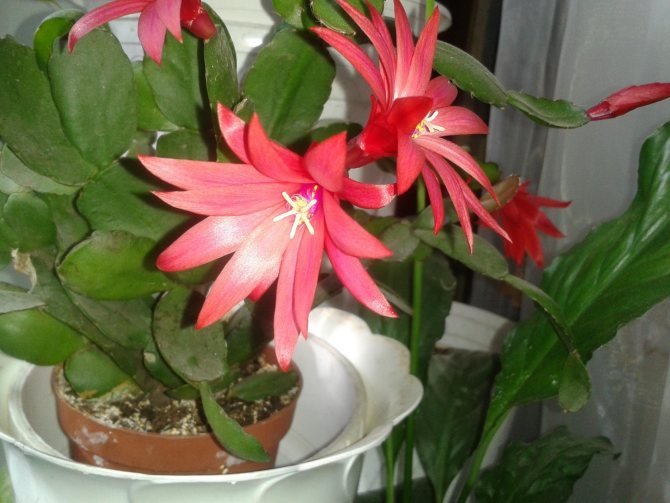

Statice is an amazing, unpretentious plant that does not require a lot of effort to grow. Due to its properties to maintain an attractive appearance, it will not only serve as a flower bed decoration, but also delight in a dry bouquet or flower arrangement.
Sowing seeds
Having decided on the cultivation method, they begin to sow statice.
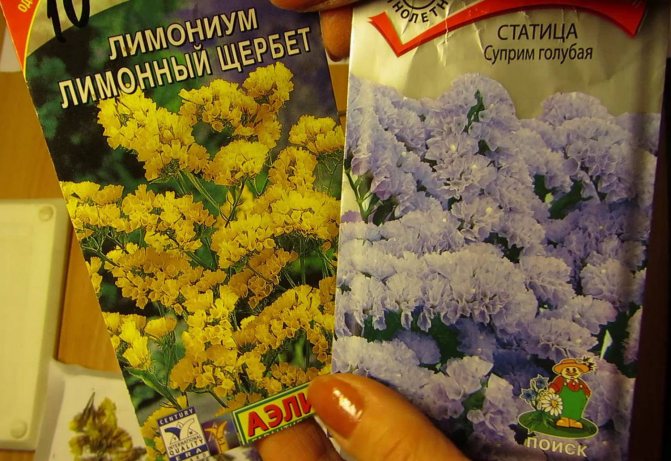

To do this, prepare boxes, pots, cups or any other container. The prepared soil mixture is poured into containers.
Next, the seeds are laid out, sprinkled with earth on top. The containers are covered with plastic wrap to create a greenhouse effect.
Then they wait for the first shoots to appear. After that, you need to remove the film and put the containers in a sunny place.
Conditions for germinating seeds
Statice seeds do not germinate too quickly. The fastest term is 10 days.
In some cases, the first shoots appear only after 21 days.
Such a long germination period is due to the fact that all the necessary conditions were not created.
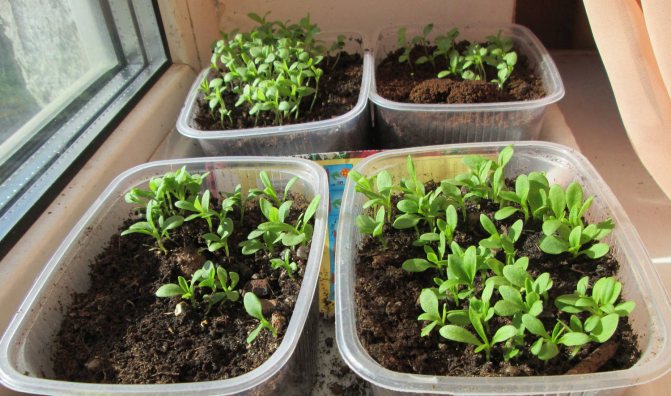

For the seeds to germinate, you need:
- ensure the room temperature is about + 20-24 ° С;
- water correctly so that the soil is constantly moist;
- warm containers with a 60 W fluorescent lamp (daily for 4-5 hours).
If everything is done correctly, you will soon be able to observe the appearance of the first shoots.
As soon as 2-3 true leaves are formed on them, you can start picking.
Seedling picking
This stage of limonium cultivation is controversial. Some gardeners argue that it is simply necessary, while others, on the contrary, do not recommend picking seedlings.
In any case, if the seeds have sprouted very often, they need to be planted.
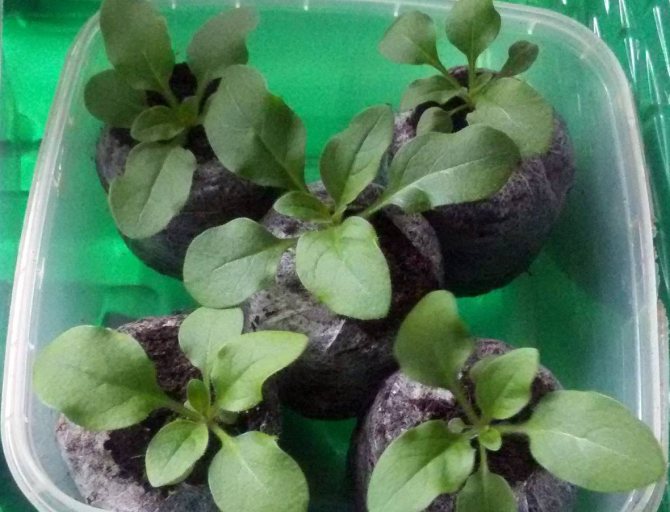

This is due to the fact that when the seedlings grow, they will not have enough sunlight and space.
The roots will begin to intertwine with each other, then it will be difficult to transplant them to a permanent place in the open ground.
Picking Kermek seedlings:
- It is recommended to water the containers with seedlings abundantly a couple of hours before the procedure. This will help soften the soil and make it looser, more pliable. This will make it easier to remove the plants without damaging the fragile root system.
- Prepare cups, pots or other containers, fill them with earth.
- The seedlings are carefully removed and placed in new containers.
- Then they are watered and removed to a sunny place.
The last point is especially important after picking plants, since they really need light.
If the seedlings do not have enough of it, they will begin to stretch, become pale and frail. This also needs to be taken into account when transplanting to a permanent place.
Lack of light can cause the statice to stop blooming.
Transfer
Since the plant differs in the rate of growth of the root system, the transplant cannot be postponed. The planting is carried out in the last spring month, when the night frosts recede.
For favorable further growth, it is worth considering some of the nuances:
- When choosing a place, remember Statice's love for the sun, so a sunny area is perfect. With constant shade, root rot and a lack of flowering can occur.
- Young seedlings are placed with a step of 30 cm from each other. This is necessary for good growth and flowering of Kermek.
- The soil should be loose with a good drainage system, without stagnant water.
Statice has very delicate and vulnerable roots, therefore, the plant cannot be propagated by division, because it will die.
Planting seedlings in open ground
When transplanting statice into open ground, it is necessary to take into account the composition of the soil, the illumination of the site.
It is also important to choose the right time so that the thermophilic plant does not suffer frost damage.
When to transplant seedlings
The timing of transplanting Kermek to a permanent place is different. They depend on the climatic characteristics of the region of the country.
The optimum temperature for growing statice is + 22-27 ° С.
Although the plant is considered unpretentious, it can freeze at a temperature of -5 ° C.
Thus, transplanting into open ground is carried out from about the end of May, but it is better to leave the plant at home until June.
Choosing a place for growing
A place should be chosen well-lit with a predominance of sunlight throughout the day.
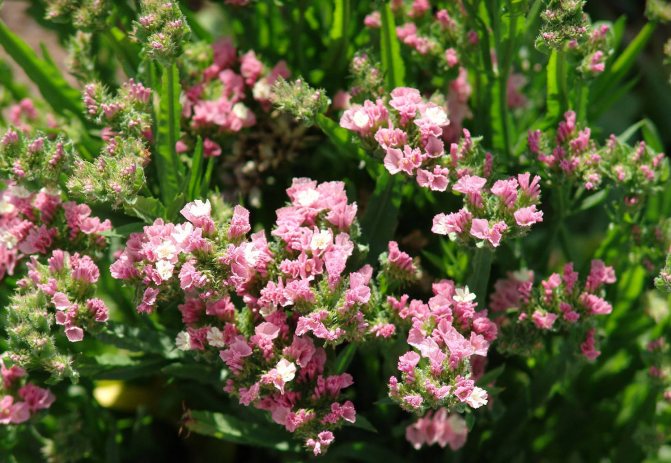

Flowering will be longer and more abundant in hot, sunny weather.
It is also important that the site is protected from the wind.
How to properly plant seedlings on the site
When transplanting seedlings to a permanent place, the main thing is not to damage its roots.
That is why the holes for seedlings must be prepared the same size as the containers in which the seedlings were grown.
Seedlings must be carefully removed from the containers and, together with a lump of earth, placed in the holes in a new place.
You need to act very carefully, this will allow the plants to quickly adapt to a new place.
After the seedlings have been transplanted, they need to be watered with salt water. For this, 1 tbsp. l. the salts are diluted in 10 liters of warm water.
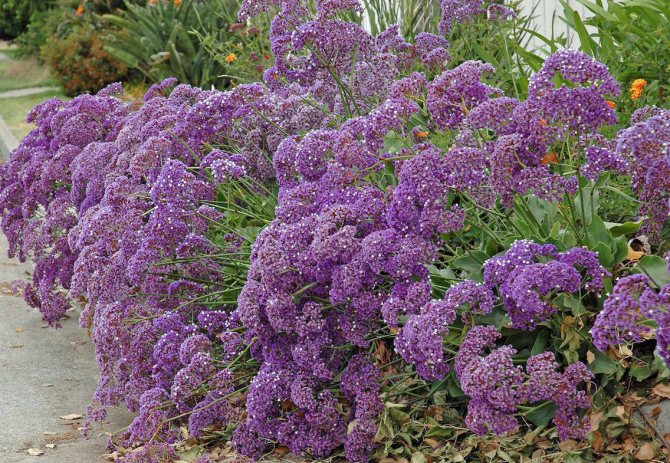

Another important point when transplanting is the correct distance between individual plants.
If you plant seedlings too close to each other, this can affect the size of the inflorescences, they will become smaller.
Thus, the optimal distance between plants is more than 25-30 cm.
Disease and pest control
Statice possesses the vitality and unpretentiousness of the weed. Diseases that struck plants growing nearby are not afraid of him. Limonium is afraid only of fungus and rot - botrytis, which attacks the roots during prolonged rains and excessive watering. From it, the plant dies if, when sick leaves are found, the entire bush is not treated with a sulfur-containing agent.
Of the pests, only aphids attack Kermek. You can wash it off with a soapy solution with the addition of alcohol. The sprayer jet must be directed from below.
Caring for the statice on the site
Many gardeners know that statice flowers are very unpretentious. They can grow even in poor soils and with minimal maintenance.
However, providing it with due attention, you will get a very beautiful and abundantly flowering plant.
How often to water
The plant can tolerate drought well. It practically does not require constant watering.
Watering the flower is necessary only in very hot weather, approximately 1 time in 40-45 days.
You need to use only warm, settled water, since the flower is very fond of warmth.
Water only at the root so that moisture does not get on the plant itself.
1 time for all the time it is imperative to pour water and salt. After watering, it is better to loosen the soil so that oxygen better penetrates the roots.
How often and how to feed
It is not necessary to feed limonium, it grows and blooms well without fertilizing.
If the soil on the site is too bad, then you can take care of the plant and feed it with mineral supplements.
You need to fertilize 10 days after planting the seedlings in a permanent place. Further, fertilizers can be applied every 3-5 weeks.
If the soil is fertile, then fertilizing the statice is not needed at all.
After flowering
After flowering, garden flowers begin to fade and turn yellow. Before the onset of frost, they need to be cut right next to the soil.
Cover with straw, leaves or brushwood, and put covering material on top. To prevent the material from being blown away by the wind, it must be pressed down with something.
You can use stones, sticks. Cut flowers can be placed in a vase at home. This dried flower looks great and lasts a long time.
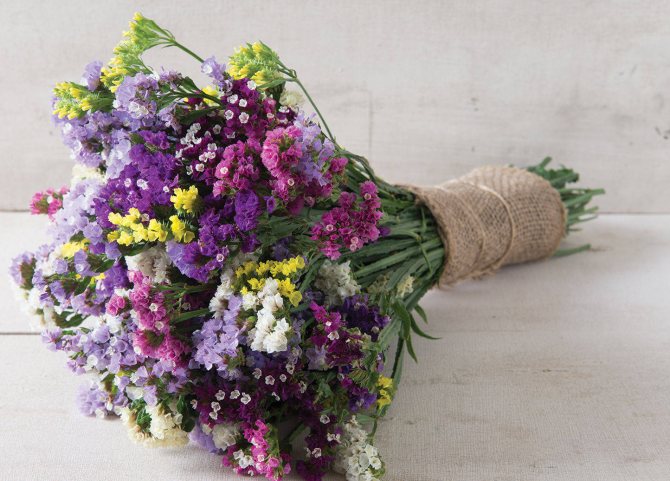

Organization of wintering
Statice is a frost-resistant plant, some representatives of the genus can withstand temperatures down to -30 ° C, but plantings must be carefully prepared for such a severe test. When the leaves begin to turn yellow and dry in autumn, cut the plants to the root and cover the plantings with straw, brushwood or dry leaves, and over the "blanket" throw a non-woven material that will serve as an excellent protection not only from the cold, but also from the spring melt water.
Do not throw away the cut inflorescences, but tie them in bunches and hang them to dry in a ventilated, gloomy room - they will make magnificent floristic compositions. When properly harvested, dried flowers remain vibrant and attractive throughout the year. In addition, the statice in the bouquet is a good sign, because in the language of flowers it personifies beauty and longevity.
The statice is popularly called the immortelle. And also it is also called kermek, limonium.Statice is a perennial herb or shrub with basal leaves that form a large rosette and with dense pubescent stems from 30 to 90 cm in height. Its flowers are brightly colored in different colors. They come in white, bright yellow, blue, purple, crimson, pink and scarlet.


